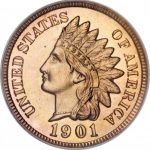Trends To Keep An Eye On in 2017 In The US Economy…
Welcome to Ute Hub › Forums › Politics › Trends To Keep An Eye On in 2017 In The US Economy…
- This topic has 5 replies, 3 voices, and was last updated 8 years, 4 months ago by
 UtahFanSir.
UtahFanSir.
-
AuthorPosts
-
-
 UtahFanSirParticipant
UtahFanSirParticipantThis is not politics, but here is the latest missive from economist Paul Kasriel: US Economy In 2017…
As I’ve posted before, I think Paul Kasriel is one of the best, if not the best modern day macro economist. I’ve posted his articles here many times. I’ve followed Mr. Kasriel since his Northern Trust days, some 12 years or so. His methods do not change and they took me awhile to understand and appreciate. They are what they are and being able to ferret out what is happening is part, a large part, of his unique skill. So when he says something I think is important, I take stock.
Here he talks again about an issue he raised on December, and I posted that article then. That piece dealt with a concept know as creation of money “out of thin air”. It is done in two ways, commercial bank credit and from the Fed. As Mr. Kasriel says, “If history is any guide, this weakening in bank credit growth excluding C&I loans is cause for concern with regard to the pace of economic activity.” Later he adds, “…a surge in inventories and C&I loans often is associated with a slowdown in the growth of final demand for goods and services. Hence, bank C&I loan growth often tends (sic) to lag growth in final demand for goods and services. That is, the behavior of bank C&I loan growth provides more information as to where the overall economy has been rather than where it is headed.”
For your edification, read the rest.
-
 UtahParticipant
UtahParticipantMan, that is heavy. I like these. I don’t understand a lot, but I like it.
What I took away from it was due to less thin air credit, there is less available money, which he then shows by showing how even though job creation is up, spending is down, and if we aren’t spending money, then everything else is irrelevant.
I think. Interesting. My spending has been down a lot lately. Sorry guys.
-
 UtahFanSirParticipant
UtahFanSirParticipantMoney as credit is the lubricant of economic growth. That is why the Fed did QE because post mother of all recessions banks were forced to have more lending coverage and they also increased or restricted lending requirements. So the Fed purchased bonds to add liquidity to the market. That created money out of thin air because the proceeds became money that in theory helped bankroll the required cover. Then later the Fed began to resell those bonds. Now banks need to loan money, keeping the Fed out of the money supply.
-
 UtahParticipant
UtahParticipantSo, if I understand this, the Fed purchased bonds from the banks, which gave the banks money to loan to people. Now, the Fed is selling these bonds, which means the banks need to start loaning their own money out, not the Fed’s.
-
 PlainsUteParticipant
PlainsUteParticipantA bank I have an investment in is having trouble getting deposit growth to match loans they could write. Higher short-term interest rates would actually help that. Of course they also need long term rates to rise, because the spread (where they make their money) is getting squeezed real bad right now. Thankfully they’ve had extremely low default rates (knock on wood) and have trimmed overhead as much as possible to stay profitable.
-
 UtahFanSirParticipant
UtahFanSirParticipantQE Explained and Why Resorted To…
When the Fed purchased the bonds, it literally created money out of thin air. That money was not in the system of currency until those purchases.
“To carry out QE central banks create money by buying securities, such as government bonds, from banks, with electronic cash that did not exist before. The new money swells the size of bank reserves in the economy by the quantity of assets purchased—hence “quantitative” easing. Like lowering interest rates, QE is supposed to stimulate the economy by encouraging banks to make more loans. The idea is that banks take the new money and buy assets to replace the ones they have sold to the central bank.”
Of course, this is distorting to asset values and interest rates, but it did keep the economy from a depression. Obama built on what Bush’s admin put into place. Or so the logic goes. The Fed did not want more investment banks or insurance companies to fail, Lehman’s and Bear Stearns was enough. I think they should have let a few more go. A lesson needed to be learned. I don’t care if earlier government regulations and deregulations encouraged the crazy loans. These guys are big boys. They need to survive on their own.
-
-
-
-
-
AuthorPosts
- The forum ‘Politics’ is closed to new topics and replies.
